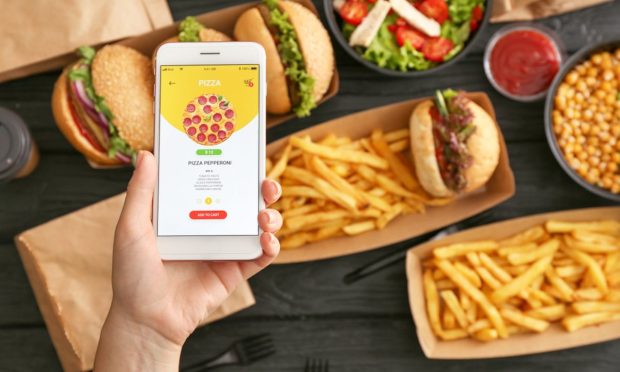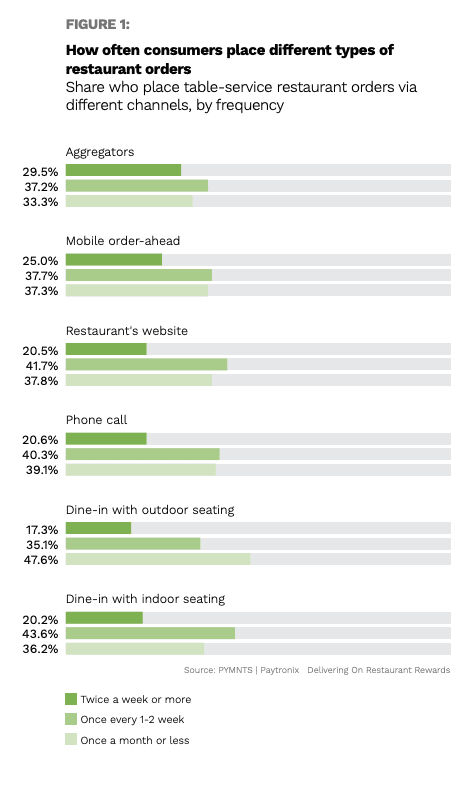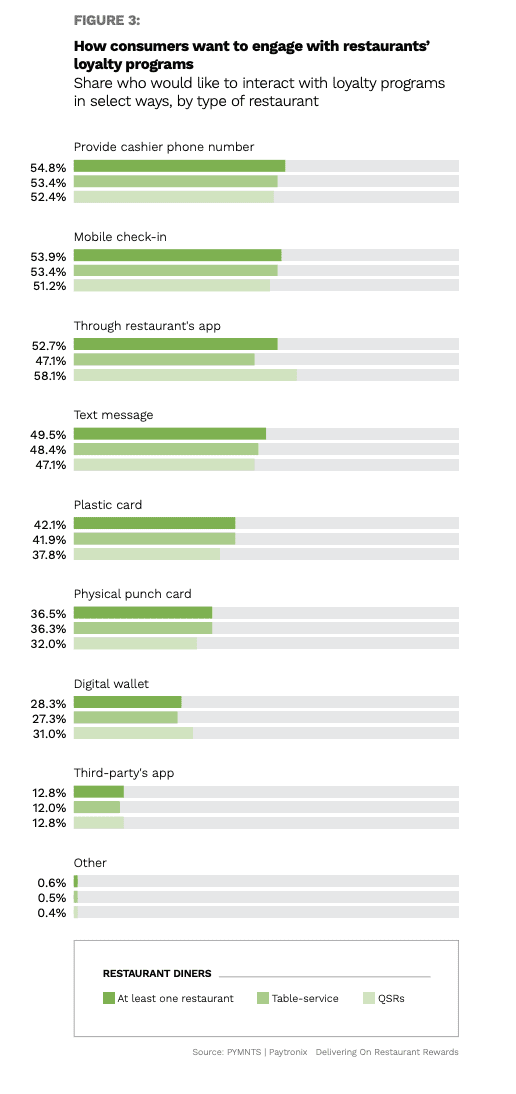New Restaurant Loyalty Data: Average Customer Uses Four Channels To Place Food Orders

The 12th edition of PYMNTS’ ongoing study series Delivering on Restaurant Rewards, a Paytronix collaboration, begins with a thought that all restaurant operators should internalize with urgency:
“Many are quickly learning that the key to success in the increasingly omnichannel restaurant ecosystem is not focusing on a single set of ordering options to the exclusion of all others, but rather trying to strike a balance by offering a mix of ordering options that suits their customers’ unique needs and expectations.”
Read more: Delivering On Restaurant Rewards
Researchers surveyed a census-balanced panel of nearly 2,100 consumers in the U.S. to get the most up-to-date view of ordering habits as they relate to restaurants’ loyalty programs. Among findings is that the “key to success” is all about the choices consumers expect and demand.
“Our research shows that restaurants cannot limit themselves by offering customers only one, two or even three ordering options if they want to maximize sales,” per the report. “The average restaurant customer regularly uses four channels to place food orders. The real question is not whether consumers will use different ordering channels if their restaurants offer them, but rather how often they will use them.”
Online ordering beats out phone or in-person orders, “with aggregators and mobile order-ahead options being used more than any other digital purchasing channel, as we found that 30 percent of both table-service restaurant and quick service restaurant (QSR) customers who order via aggregator do so twice per week or more.” Additionally, 25 percent and 23 percent of table-service and QSR customers using mobile order-ahead do so at the same frequency.
What comes through is how digital ordering optionality is what the people want, and it’s best not to disappoint. That’s just a taste of the habits and preferences on order in the latest report.
 Loyalty Going Decidedly Mobile
Loyalty Going Decidedly Mobile
If there’s something beyond hunger and convenience driving MOA rewards, it’s the smartphone. Researchers find that most restaurant customers want seamless app-based ordering and loyalty in a single integrated journey that ends in relationship satisfaction.
Per the latest Delivering on Restaurant Rewards, “Five of the most common ways restaurant customers want to interact with their restaurants’ loyalty programs involve their smartphones, in fact, with mobile check-ins at the top of the list. Fifty-four percent of restaurant loyalty program users want to use a mobile check-in program.” Another 53 percent want rewards alerts served up in-app, and 50 percent want to receive them via text.
At the macro level, researchers found that that 85 percent of all restaurant loyalty program users “want to interact with their restaurants’ loyalty programs using smartphone-enabled methods like these, underscoring how important mobile-centric purchasing options and loyalty programs will be in restaurants’ customer engagement strategies going forward.”
 Don’t Reward Me Only For Eating
Don’t Reward Me Only For Eating
QSR customers enjoy being rewarded with discounts and free food. In fact, up to 81 percent of those diners using loyalty will take the food, while 72 percent say they prefer discounts.
Of all such valuable findings in the August edition of Delivering on Restaurant Rewards, the fact that consumers want to be rewarded for activities other than ordering food carries some potentially major implications — not just right now, but certainly as MOA experiences mature.
Noting that 37 percent of restaurant customers who use loyalty programs “would like to earn points for providing contact information, and 34 percent would like to earn points for supporting restaurants on social media, such as by giving them positive reviews or sharing their dining experiences with friends and followers,” the report urges restaurants to use data to “reimagine their loyalty engagement strategies and expand how consumers can support them while also earning rewards.”
